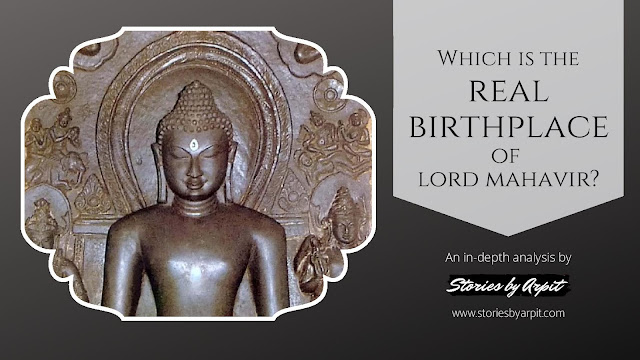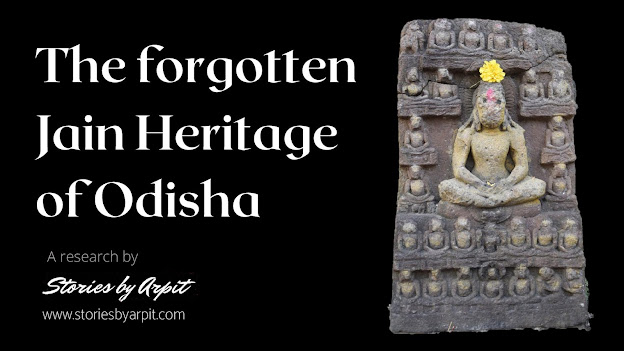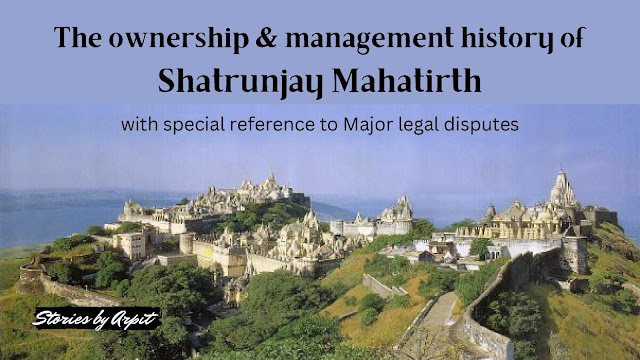The magical idol of Kesarwadi Jain Tirth
Braving the untimely torrential rains, we were on our way from Chennai to the town of Puzhal which is home to the most ancient and beautiful idol of Lord Adinath in Southern India; popularly known as Kesarwadi Jain Tirth. My gurudev, Param Pujya Muniraj Shri Shilchandravijayji Maharaja had highly recommended us to make a pilgrimage to this Tirth as the beauty of the idol had mesmerized him to say the least. Therefore, after loading ourselves in an auto-rickshaw, we headed off from Sowcarpet (Chennai), on 30th November 2019 to experience this divinity.
Before the the tirth was suggested by my gurudev, I had heard a lot about the divinity of the idol from various other books; therefore I was really keen to visit this Tirth and get a glimpse of the beautiful idol of the Lord. After a drive of nearly an hour on the Grand Northern trunk road, braving the torrential rainfall and maddening traffic, we reached the sleepy town of Puzhal post sunset.
 |
| Ancient temple of Lord Adinath (Source: Facebook) |
 |
| Gateway to the temple |
The moment we reached Kesarwadi, the entire complex got enveloped in darkness due to a power-cut, which was quite surprising, given how developed Chennai was. In pitch darkness, we could see the silhouette of a recently constructed grand temple on the left and an ancient temple on the front. Carefully placing our steps, we made our way towards the ancient temple, unable to contain our eagerness to meet the lord. In complete darkness, we could just see rays of golden light emerging from a distance making us more impatient; as if a surprisingly divine force was emanating magnetic rays. I do not recall what happened to me next, but in my enthusiasm, I found myself running and not walking. Within a couple of seconds, I found myself in front of the divine light – the garbha griha (sanctum sanctorum) – in front of the supremely beautiful, insanely stunning, splendidly magnificent and the gloriously striking idol of Lord Adinath. In the midst of the gleaming diya’s, the enchanting eyes of the lord mesmerized me completely, instantly transporting my mind to Shri Devardhi Saheb’s words –
(O Lord! your gleaming eyes are so divine, as if looking directly at me!)
આંખમાં વ્હાલ છે, આંખમાં કમાલ છે, આંખ અમૃત ઝરે !
(O Lord! Your amazing eyes are full of love and affection, as if nectar was dripping from these eyes!)
આંખમાં સુખ, આંખમાં રસ, આંખમાં તેજ છે !
(O Lord! Your radiating eyes have the ability to give immense comfort!)
આંખ જાદુ કરે !”
(O Lord! Your lovely eyes are indeed magical!)
 |
| The beautiful idol of Shri Adinath Bhagwan |
तुभ्यं नमस्त्रि भुवनार्ति हराय नाथ,
(O Deliverer from all the miseries of the three realms! I bow to you!)
तुभ्यं नमः क्षिति-तलामल-भूषणाय,
(O Virtuous adoration of this world! I bow to you!)
तुभ्यं नमस्त्रि-जगतः परमेश्वराय,
(O Lord Paramount of the three realms! I bow to you!)
तुभ्यं नमो जिन भवोदधि शोषणाय !
(O Terminator of the unending chain of waves of rebirths! I bow to you!)
 |
| Shri Adinath Bhagwan (clicked under flash light) |
The monk, overjoyed with this discovery broke his fast and inspired the pilgrims and the local people to construct a temple dedicated to the lord. Within a short span, the temple was constructed and the excavated idol of Shri Adinath Bhagwan was installed as the presiding deity along with the footprints of the monk (which are even present till date). An ancient idol of Padmavati Devi, which is believed to be very miraculous was also installed in the temple premises. The temple was subsequently renovated in 13th century after which no records are available until the 18th century.
The 51-inch idol of lord Adinath is believed to be made of a single slab of Kasauti Patthar (touchstone). However, some scholars believe the idol to be carved out of granite. As the idol has been plastered and painted, it is very difficult to ascertain the identity of the stone currently. Similar styled idols have also been excavated from various parts of Tamil Nadu, Andhra Pradesh and Karnataka making the design distinct to South India.
 |
| Miraculous idol of Padmavati Devi |
 |
| Footprints of the revered Muni whose divine vision made it possible to unearth the idol of Adinath Bhagwan (Source - Veludharan-blogspot) |
 |
| Similar style idols in Dravidian architecture |
While most of the structure has been renovated currently, some of the pillars from the original temple have been retained in the external Rangmandap. Although they have been garishly painted (leading to loss of their antiquity value), the carvings on the pillars show some interesting aspects of Dravidian culture and beliefs in the ancient era –
1. Rahu & Ketu (Solar and Lunar eclipses)
2. Entwined Snakes
3. Jain Gandhars & monks
4. Dwarpal’s
5. Clowns / Dwarf clowns
6. Yaksh & Yakshinis
2. Entwined Snakes
3. Jain Gandhars & monks
4. Dwarpal’s
5. Clowns / Dwarf clowns
6. Yaksh & Yakshinis
 |
| Carvings of Solar (top) & Lunar Eclipse (bottom) |
 |
| Carvings of entwined snakes |
 |
| Carvings of Jain monks and Gandhars |
One of the pillars also represent a carving which is believed to depict the Nirvan of Lord Adinath’s mother, Marudeva on an elephant along with her Chauri bearer attendants (The Shwetambar sect believes that Mata Marudeva attained Kevalgyan and Nirvan after witnessing the divinity of Lord Adinath sitting in the Samavasaran). However, scholars believe the carving to be that of Bhrama Dev Yaksh along with his consorts commonly found in many South Indian temples.
 |
| Carving of Marudeva mata on elephant / Brahmadev Yaksh |
Till 18th century, most of the history of this temple is shrouded in obscurity. It has been recorded that only a few Jains settled in Madras (who had come down from Marwad- Rajasthan) used to make pilgrimage to this temple in bullock carts. In due course, the temple was in a state of disrepair and on the verge of collapse. In 1783, Colonel Colin Mackenzie, the first Surveyor General of India recorded that this temple was constructed by chief of Kurumbars under the patronage of the Cholas and that his successors were devout followers of Jainism. At some point of time, Puzhal was also known as the capital city of Jain kings known by the name of “Pudal-kotalam”.
While this was originally a Digambar Jain Temple, the management came under the Shwetambars as records from 1887 show that prominent members of the Shwetambar sect were a part of the Trust board. Swamiji Sri Rikhavdasji, a self realized soul, took it upon himself to restore the glory of the temple and left no stone unturned to adequately carry out repairs and renovations. In 1960, under the guidance of Acharya shri Vigyansurishwarji Maharaja and Panyas Shri Yashobhadravijayji, the Shikhar (spire) was reconstructed and an idol of Shri Parshwanath Bhagwan was installed on the roof. In 1964, due to the efforts of Acharyashri Purnanandsurishwarji Maharaja (who miraculously resolved a family dispute of the local Collector), the 6.25 acre plot of land was transferred in the name of Shri Adinath Jain Shwetambar Mandir Trust. Further, in 1995, under the guidance of Acharya Shri Kalapursurishwarji Maharaja, a new grand temple dedicated to Lord Parshwanath was constructed along with a Bhaktamar temple in the basement.
 |
| Newly constructed grand temple of Shri Parshwanath Bhagwan (Source: Google) |
After understanding the history of the temple, we sat for bhakti in front of the mesmerizing idol of the Lord. Within a few moments the power cut was restored and it seemed that the entire aura of divinity was diminished in the glare of tube-lights; It seemed as if the Adhishtayak's had deliberately orchestrated the power-cut so that we could do darshan of the the true swarup (divine form) of the lord! We requested the pujari to shut the glaring tube-lights to go back to the divinity. After singing 5-6 bhakti geet's, we could not understand how fast the time flew; we wanted to spend some more time near the divine lord; However, the lack of time forced us to bid goodbye to one of the most divine idols I had ever seen. After darshan of all the shrines in the old and new temple, we made our back to Chennai, enriched and enchanted by the divine darshan.
 |
| Mulnayak Shri Parshwanath Bhagwan in the new temple. |
How to Visit-
Shri Kesarwadi Tirth, is located in the town of Puzhal which is nearly 17 kilometers from Chennai Central on the Grand Northern trunk road. Ola/ Uber and Auto rickshaws are available. (Our auto rickshaw took Rs. 600 for a round trip including an hour of waiting at the temple).
Bhojalshala and Dharamshala facilities are available for pilgrims.
The complete co-ordinates are as below – Address: Red Hills, 41, Gandhi Main Rd, St Antony Nagar, Puzhal, Chennai, Tamil Nadu 600066
Contact Number(s) – 9382285666, 9840123170, 044 2346 8844, 044-23468900
The author is thankful to research scholars, Shri M.D. Rajendra Jain, Dr. Priyadarshana Jain, Dr. Renuka Porwal, Ms. Mital Lalan and Temple management for their valuable insights on the history of this temple.
Other sources/ references-
1. Jainsite.com
2. Agamnigam.com
3. Veludharan-blogspot.com
4. thenewsminute.com
5. digambarjainteerthakshetra.com
 |
| Ancient temple of Shri Adinath Bhagwan.(Source: Google) |













Very well written and to me it seemed that Lord himself wanted us to have a divine experience.. With lights gone and seeing this awesome idol of God in light of DIYA to music of rains in this odd season filled soul with contentment.
ReplyDeleteBut than questions does arise that if such rich heritage of ours (Jainism) is there in Southern part of India too, why isnt same being highlighted, restored and bought back to glory again?? WE SHOULD WORK FOR SAME.
Plenty temples all across including Southern India has pillars with Jain Tirthankaras and/or artefacts sculpted onto them, evident remnants of what could’ve belonged to a Jain temple in the area.
Highly appreciate your work. It really needs high source of knowledge and information to interpret the work.
ReplyDelete.
.
Recommendations : full updates about antariksh tirth to be published daily.
Your description of darshan of the Lord gave me ghoose bumps.
ReplyDeleteNice article.... But things to correct
ReplyDelete1. After 1968only the said temple moved under swethabar's control (we senior citizen are evidence for this...), In initial swethabar friends supported to protect this temple.... But latter they fully occupied and changed it as present condition
2. The footprint not belongs to any muni.....Nor which belongs to a tamil jain who from kumbakonam.... local people kept his footprint as a part of respect to his soul (Who the one taken care this temple for a long period)
B u t thx for ur wonderful article to recall our past hidden history
Are people of other faiths allowed inside? I am a Hindu and want to visit this temple
ReplyDeleteYes. People from other faiths are allowed to visit the temple.
DeleteThe information given is half correct. Lord Adhinatha or Lord Rishabanatha was the teacher of Kurumbas who are the bloodline of Kurus or Kauravas. They were defeated in war and forcibly converted to Hinduism
ReplyDelete